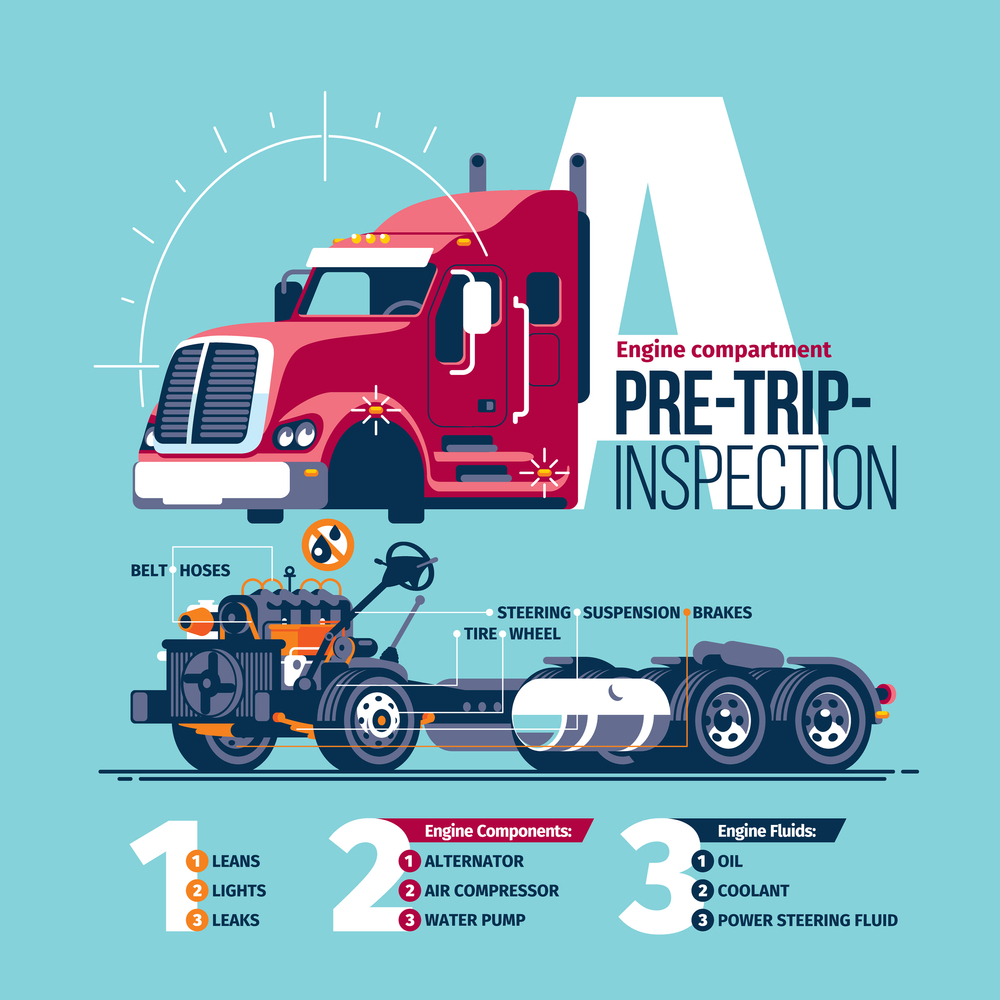Pre-trip inspections are more than just a regulatory requirement; they’re a critical safety measure that directly impacts your well-being, the safety of others on the road, and the overall success of your operation.
Why Pre-Trip Inspections Matter
- Safety First: A thorough pre-trip inspection can identify potential mechanical issues before they escalate into dangerous situations.
- Legal Compliance: Adhering to pre-trip inspection regulations is essential to avoid costly fines and legal troubles.
- Efficiency: Identifying and addressing minor issues early on can prevent costly breakdowns and delays.
- Professionalism: A well-maintained truck reflects positively on you and your company.
Key Areas to Inspect
Exterior Inspection:
- Tires: Check for proper inflation, tread depth, and signs of damage.
- Wheels and Rims: Inspect for cracks, missing lug nuts, and other defects.
- Brakes: Verify brake function, check for leaks, and examine brake linings.
- Lights: Ensure all lights, including headlights, taillights, brake lights, turn signals, and clearance lights, are functioning correctly.
- Mirrors: Confirm that all mirrors are clean and securely fastened.
- Windshield: Check for cracks, chips, and obstructions to visibility.
- Body and Frame: Look for damage, rust, and signs of structural integrity issues.
Interior Inspection:
- Seat Belts: Ensure they are securely fastened and functioning properly.
- Steering Wheel: Check for damage, excessive wear, and proper alignment.
- Dashboard Gauges: Verify that all gauges are working correctly, including the speedometer, tachometer, oil pressure gauge, coolant temperature gauge, and fuel gauge.
- Horn: Test the horn to ensure it is functioning properly.
- Wiper Blades: Check for wear and tear and replace as needed.
- Emergency Equipment: Verify that you have a fire extinguisher, first aid kit, and other required emergency equipment.
Under-the-Hood Inspection:
- Engine Oil: Check the oil level and condition.
- Coolant: Ensure the coolant level is adequate and there are no leaks.
- Belts and Hoses: Inspect for wear, cracks, and leaks.
- Battery: Check the battery terminals for corrosion and secure connections.
- Air System: Verify air pressure and check for leaks in hoses and fittings.
Tips for Effective Pre-Trip Inspections
- Take Your Time: Don’t rush through the inspection process.
- Use a Checklist: A checklist can help you stay organized and ensure that you don’t miss anything.
- Train Your Eyes: The more you inspect, the better you’ll become at identifying potential problems.
- Document Your Findings: Keep a log of your inspections to track maintenance and repairs.
- Report Issues Promptly: If you identify any issues, report them to your supervisor immediately.
By prioritizing pre-trip inspections, you’re not only protecting yourself and others on the road, but you’re also contributing to a safer and more efficient transportation industry.

